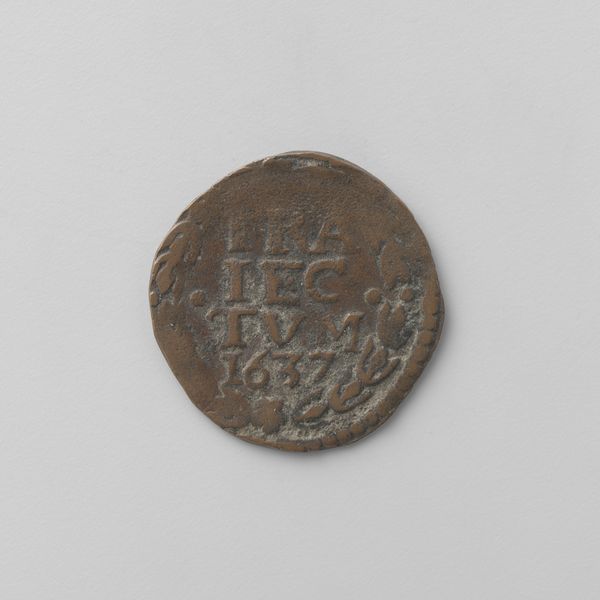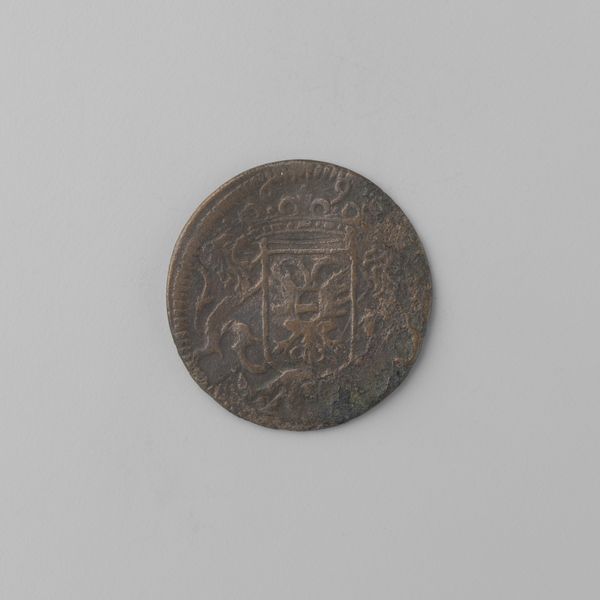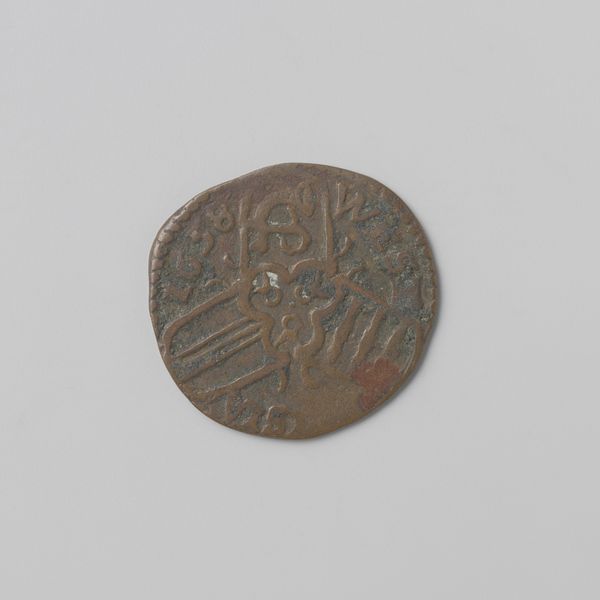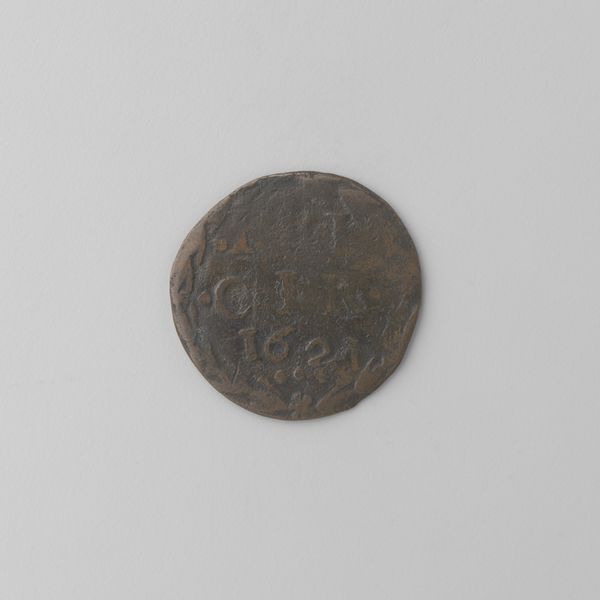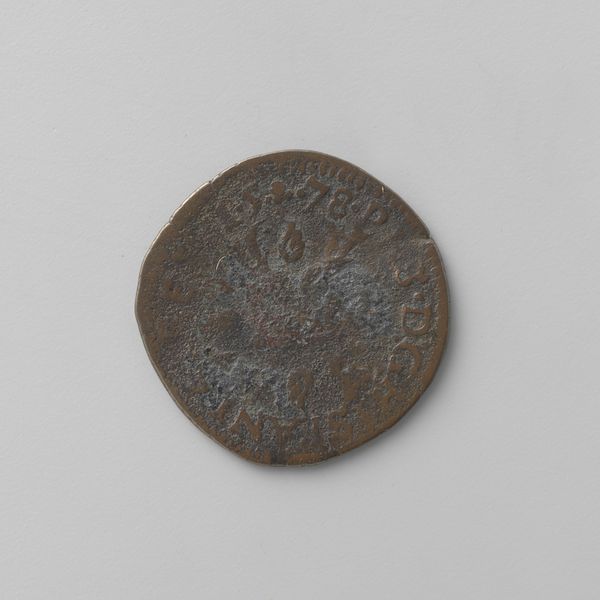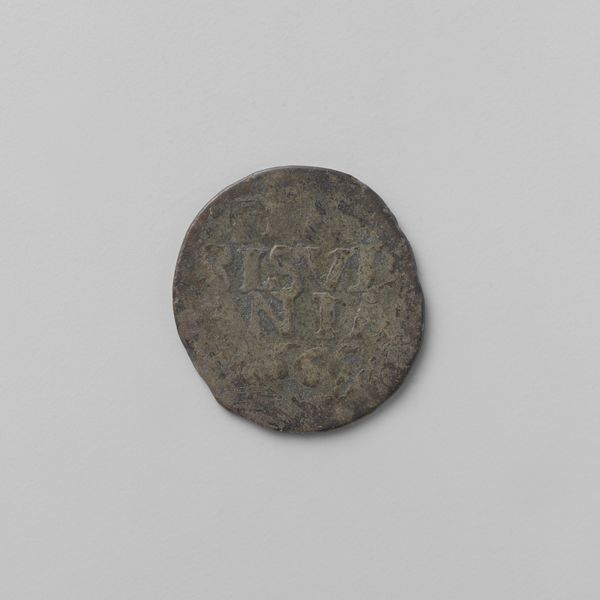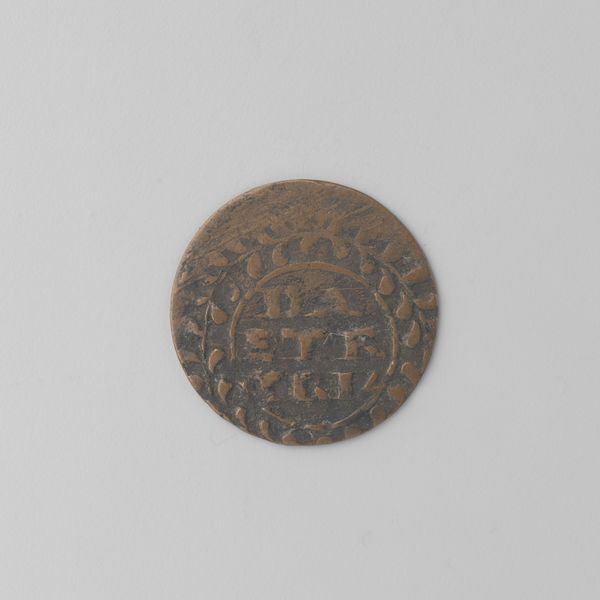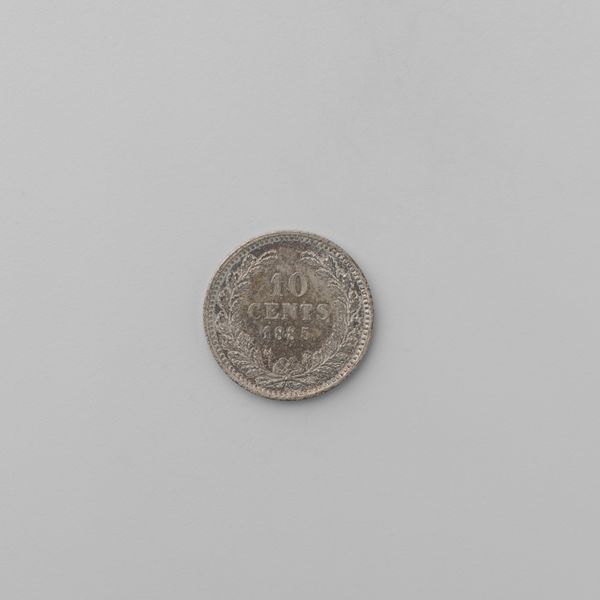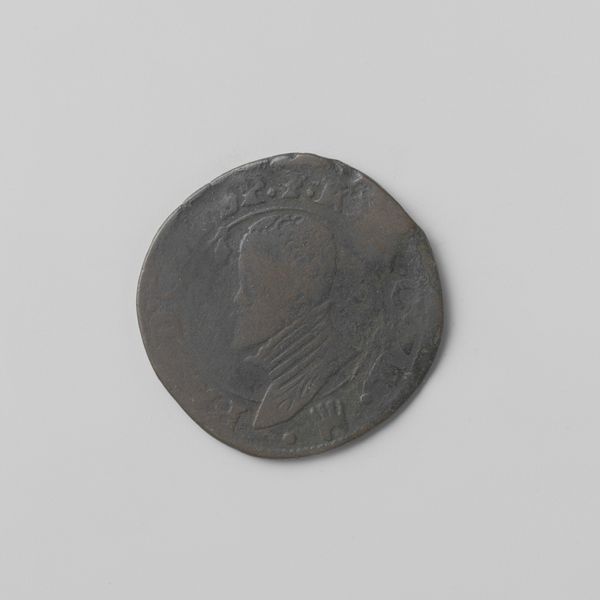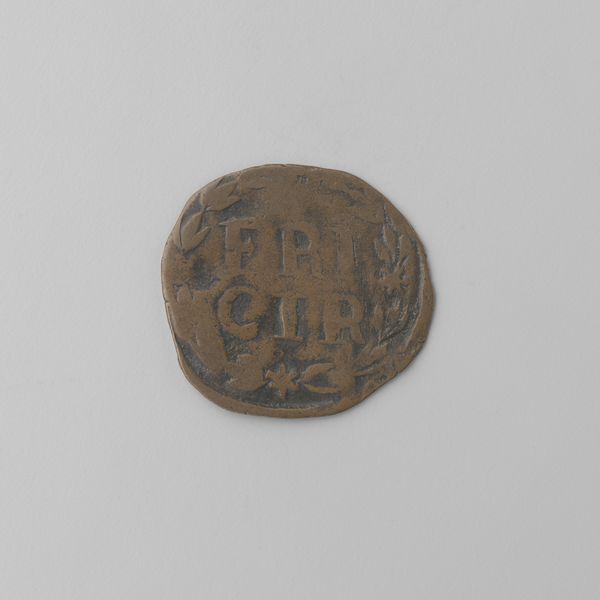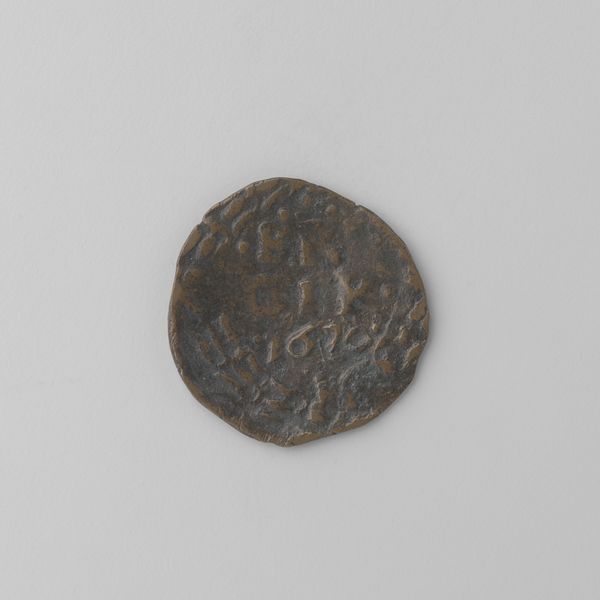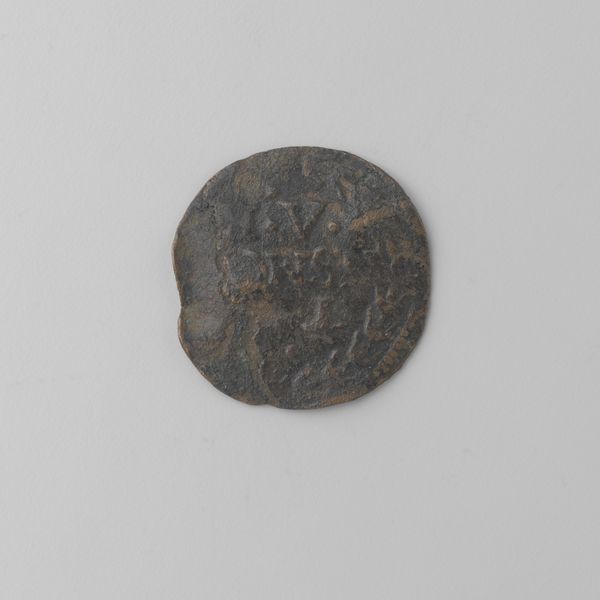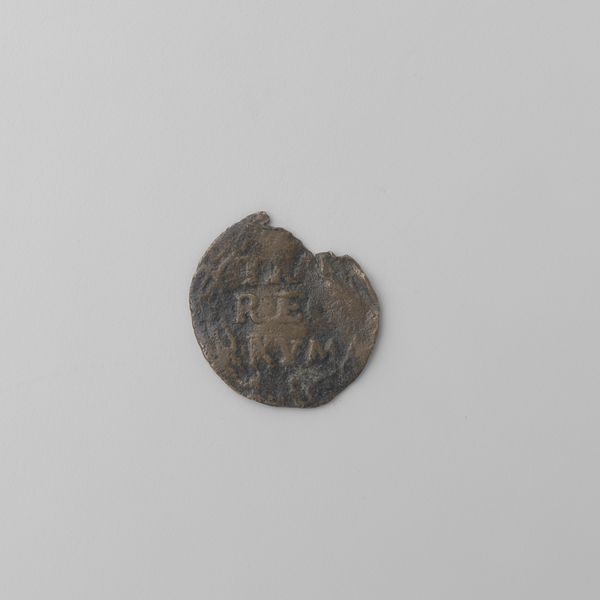
metal
#
portrait
#
metal
#
ancient-mediterranean
Dimensions: diameter 1.9 cm, weight 1.60 gr
Copyright: Rijks Museum: Open Domain
Editor: We’re looking at a Reckheimse duit, dating back to 1621, crafted from metal, portraying Ferdinand van Aspremont-Lynden. Its worn surface makes me wonder about all the transactions and hands it passed through. What stories do you think this little coin could tell us? Curator: Indeed. Coins are fascinating historical artifacts, not just for their monetary value but as tools of propaganda and identity. Ferdinand van Aspremont-Lynden's "duit" provides a glimpse into the fragmented political landscape of the early 17th century. It projects an image of power, literally stamping his authority onto everyday currency. Editor: So, it's less about its worth and more about branding, in a way? Curator: Precisely. Consider the historical context. The Dutch Revolt was ongoing. Coinage, controlled by local lords, symbolized autonomy against Spanish rule. Who was likely using this coin? Whose loyalty was Ferdinand trying to secure? Think of the messages, the subtle claims being circulated with each exchange. Editor: That’s a helpful lens. I was only seeing it as a mundane object. Now, I see it acting within larger power dynamics. It really puts it into perspective. Curator: And that perspective is vital for truly understanding and appreciating material culture. We've extracted political meaning from what appears to be a humble artifact. Editor: It’s amazing to think something so small could have so much significance! I'll definitely view currency in museums differently from now on.
Comments
No comments
Be the first to comment and join the conversation on the ultimate creative platform.
